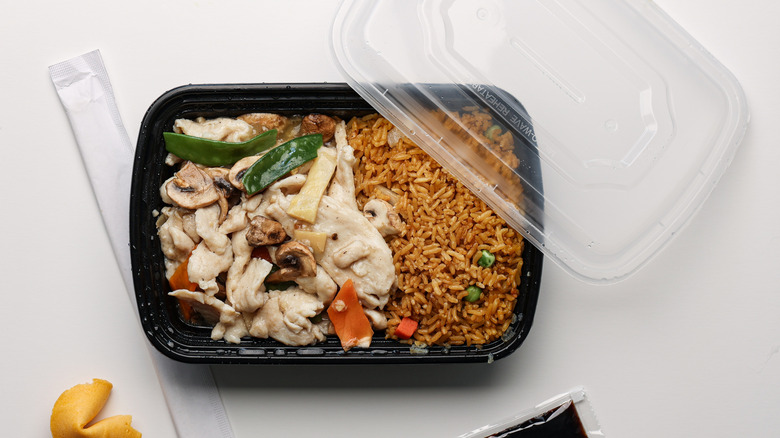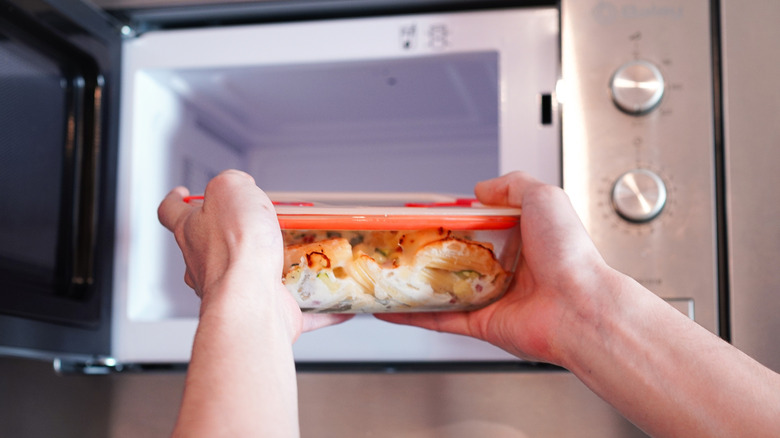Is It Safe To Heat Leftovers In Takeout Containers In The Microwave? Here's What To Know
You're hungry, you've just come home with your favorite takeout, and you're tempted to pop it straight into the microwave, container and all. After all, it seems easier and faster to do it this way rather than dumping everything into a clean bowl and dirtying dishes that you'll just have to wash later. Before you hit "Start," it's worth pausing for a second, because not all takeout containers are designed to handle the heat. (And on that note, there are some other things that you're probably putting in the microwave that you never should.)
Food experts and scientists caution that some incompatible plastics — including polystyrene, BPA, and DEHP — can melt, warp, or leach unwanted compounds under high heat, which may affect both your meal and your health. The quality and design of the container, the type of food, and how long you microwave it for all have an impact. That being said, you don't have to throw away the plastics; you can use them in the garden instead to plant seedlings.
How to microwave leftovers safely
First, check the label of the dish you plan on using to reheat your food. If the container has a microwave-safe symbol or is explicitly marked for reheating, that's your green light, but it does come with a major caveat. Containers labeled "microwave-safe" are typically created to withstand the kind of heating that leftover meals need. But, they're not guaranteed to be free of harmful chemicals. According to ScienceLine, the "microwave-safe" label generally means the plastic won't melt or warp, but it can still leach chemicals like BPA and phthalates into food, especially when heated. To truly steer clear, it's best to use glass or ceramic containers for heating food in the microwave, as these materials do not contain the same chemicals that can leach from plastics.
Next, mind the food type and choose the best leftovers to reheat. Acidic or fatty dishes (like tomato-based sauces or oily stir fries) tend to absorb more chemicals and can degrade plastics faster. Finally, inspect your container during and after heating. If it warps, softens, smells odd, or looks glossy or sticky, you should stop using it for microwave reheating since those are warning signs that the material is breaking down. With all the ongoing research into microplastics, this isn't a time to be easygoing; be picky about what container you use.


